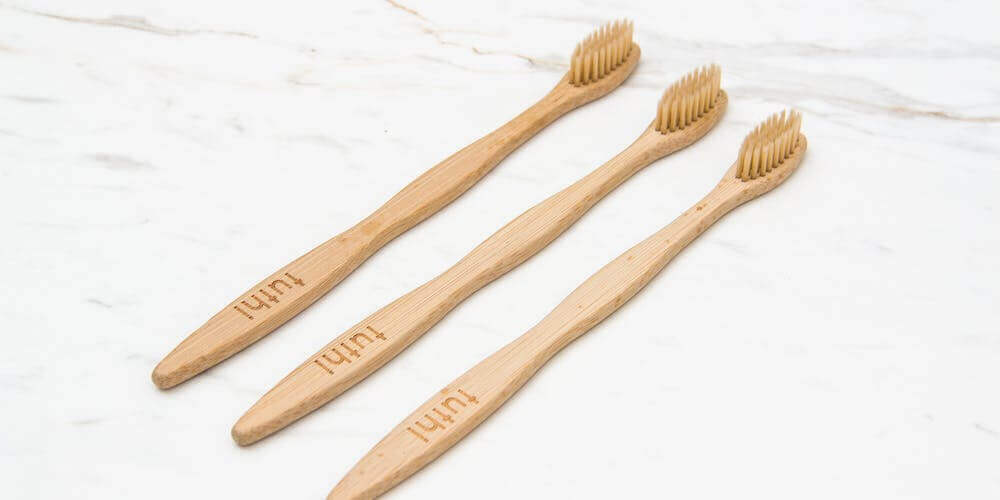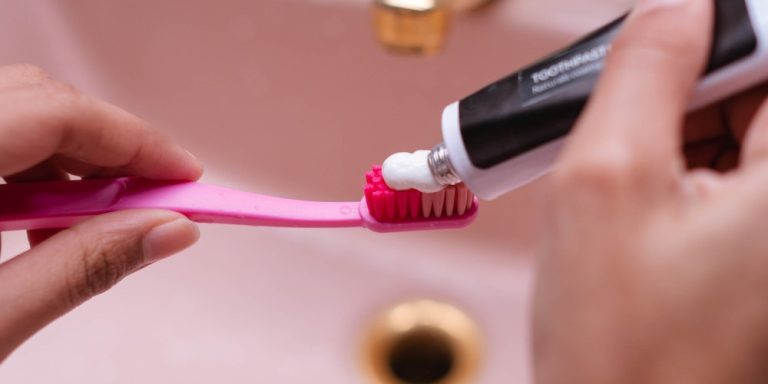In this article, you’ll learn how to choose the right toothbrush for your oral health.
Introduction
Selecting the perfect toothbrush transcends mere bristles and handles; it’s a cornerstone of oral care. The quest for the right toothbrush delves beyond the aisles of convenience stores; it’s a journey toward optimal oral health.
Understanding the nuances of this choice empowers individuals to craft personalized oral care routines that resonate with their unique needs. It’s not just about picking a tool; it’s about cultivating a ritual that safeguards smiles, nurtures gums, and fosters a sense of well-being.
Join us on an exploration of how to choose the right toothbrush that becomes a trusted companion in the pursuit of radiant smiles and lasting oral vitality.
Table of Contents
Understanding Toothbrush Types
Manual vs. Electric: Which Suits You Better?
The perennial debate between manual and electric toothbrushes isn’t merely about personal preference; it’s a choice laden with considerations that influence your oral health journey.
Manual toothbrushes, traditional and time-tested, offer familiarity and simplicity. They put the brusher in direct control, allowing for precise movements and tactile sensation.
Conversely, electric toothbrushes introduce innovation, often boasting features like timers, pressure sensors, and varying modes.
Their oscillating or sonic motions promise thorough cleaning, catering to diverse needs, from those seeking convenience to individuals with specific dental conditions.
Choosing between the two is akin to selecting a path—one rooted in tradition, the other in technological advancement.
It’s about identifying what resonates with your brushing style, dental requirements, and overall comfort, ultimately aligning with a brush that seamlessly integrates into your daily oral care routine.
Features to Consider
Bristle Varieties and Their Impact
The diverse landscape of bristle varieties isn’t just about choosing between soft, medium, or hard bristles; it’s a nuanced decision that profoundly impacts your oral health.
Soft bristles, gentle and pliable, cater to a wide spectrum of users, effectively removing plaque while being tender on sensitive gums.
Medium bristles, striking a balance between softness and firmness, suit individuals seeking a middle ground for thorough cleaning without being overly abrasive.
Hard bristles, although adept at removing stubborn debris, may pose risks by being too harsh on gums and tooth enamel, potentially causing abrasion and sensitivity.
Selecting the ideal bristle type isn’t a one-size-fits-all scenario; it’s about aligning the bristle’s firmness with your oral needs, ensuring effective cleaning without compromising on oral health.
Head Shape and Size Matters
The often-overlooked aspect of a toothbrush—the head shape and size—holds significant sway in optimizing your brushing routine.
Compact heads cater to precision, enabling easy access to hard-to-reach areas within your mouth, ensuring thorough cleaning even in the tightest spaces.
On the other hand, larger heads cover more surface area, making them advantageous for those desiring efficient cleaning with fewer strokes.
Understanding how the head shape and size complement your oral anatomy is pivotal. It’s about choosing a toothbrush head that harmonizes with the contours of your mouth, enhancing your ability to navigate every nook and cranny for a comprehensive and effective clean.
Handle Design for Comfort and Control
Beyond the bristles and head, the handle design of a toothbrush is pivotal in crafting a comfortable and controlled brushing experience.
Ergonomically designed handles offer a snug fit in your hand, providing a secure grip and promoting ease of movement during brushing.
Textured or rubberized grips enhance control, ensuring the brush stays put even when wet, making it ideal for individuals with limited dexterity or those seeking a steady hand while brushing.
Selecting a toothbrush with a handle that feels natural and comfortable in your hand elevates not just the brushing process but also your overall oral care routine.
How to Choose the Right Toothbrush for Optimal Oral Care
Below are two major factors you need to know on how to choose the right toothbrush for your oral health.
Assessing Your Dental Needs
Before embarking on the quest for the perfect toothbrush, it’s crucial to introspect and understand your unique dental needs.
Consider factors like plaque accumulation, where a focus on effective plaque removal might necessitate specific bristle types or brushing techniques.
Gum sensitivity might call for softer bristles to prevent irritation, while orthodontic appliances demand brushes designed to navigate around wires and brackets.
By comprehensively assessing your dental requirements, you pave the way for a tailored approach to selecting the right toothbrush, ensuring it becomes an ally in your quest for optimal oral care.
Consulting with Your Dentist
Amidst the myriad of toothbrush choices, the guidance of a dental professional shines as a beacon of personalized advice.
A consultation with your dentist not only offers insights into your specific oral health needs but also provides tailored recommendations.
They can pinpoint concerns like gum health, enamel condition, or potential issues with orthodontic devices, guiding you towards the most suitable toothbrush based on your individual circumstances.
Collaborating with your dentist empowers you to make informed decisions, ensuring the toothbrush you choose aligns perfectly with your oral health aspirations.
Exploring Brushing Techniques
Proper Brushing Techniques for Effective Cleaning
Mastering the art of proper brushing techniques is akin to wielding a potent tool for optimal oral hygiene.
Employ small circular motions with gentle pressure, ensuring coverage across all tooth surfaces, including the often-neglected gumline.
Pay meticulous attention to angles, aiming bristles towards the gum line at a 45-degree angle for thorough plaque removal.
Don’t rush; allocate a minimum of two minutes per brushing session, dedicating equal time to upper and lower teeth, inside and outside surfaces, and chewing areas.
Adopting these precise brushing techniques elevates your oral care routine, ensuring a comprehensive and effective clean with every brushstroke.
Reaching Those Tight Spaces
Navigating those intricate and snug spaces within your mouth demands tailored solutions. For individuals with braces, dental work, or narrow gaps between teeth, selecting a toothbrush designed explicitly for these challenges becomes paramount.
Go for a brush with angled bristles or a compact head, allowing precise access to those hard-to-reach spots. Alternatively, interdental brushes or floss picks work wonders in sliding through tight spaces, ensuring no area is left uncleaned.
Choosing tools that cater specifically to these spaces ensures a thorough clean, preventing plaque buildup and potential oral health issues in these often overlooked but crucial areas.
Considering Special Oral Conditions
Sensitive Gums and Tooth Sensitivity
For individuals grappling with sensitive gums or tooth sensitivity, the choice of a toothbrush plays a pivotal role in maintaining oral comfort.
Going for extra-soft bristles becomes crucial, ensuring gentle yet effective cleaning without aggravating sensitive areas. Brushes explicitly designed for sensitive teeth often feature softer bristles or specialized coatings, safeguarding against discomfort during brushing.
Additionally, employing a light hand while brushing and choosing toothpaste formulated for sensitivity further enhances the overall oral care routine, providing relief and protection for sensitive gums and teeth.
Selecting brushes and oral care products tailored for sensitivity is a proactive approach in nurturing oral health without compromising comfort.
Orthodontic Appliances and Specialized Brushes
Navigating oral care with orthodontic appliances, such as braces or aligners, calls for specialized brushes tailored to these unique needs.
Brushes with angled bristles or V-shaped heads cater specifically to cleaning around wires, brackets, or intricate dental work, ensuring thorough plaque removal even in challenging areas.
Some brushes feature interchangeable or adaptable heads, allowing customization for different appliance structures.
Additionally, interdental brushes or floss threaders aid in flossing beneath wires, maintaining hygiene where traditional methods might struggle, ensuring comprehensive oral care during orthodontic treatment.
Choosing these specialized tools streamlines oral hygiene, preserving dental health while undergoing orthodontic treatments.
Innovations in Oral Care
Smart Toothbrushes: The Future of Oral Health?
The evolution of smart toothbrushes heralds a revolutionary era in oral care, integrating technology seamlessly into our daily routines.
These innovative brushes come equipped with sensors, Bluetooth connectivity, and accompanying apps that offer real-time feedback and personalized guidance.
From tracking brushing duration to monitoring pressure and areas missed, these devices transform brushing into an interactive experience.
Some even employ artificial intelligence to analyze brushing habits, providing tailored suggestions for optimizing oral hygiene routines.
Smart toothbrushes aren’t merely gadgets; they represent a paradigm shift toward more informed, data-driven, and personalized oral care practices, shaping the future of dental health.
Promoting Optimal Oral Hygiene
The Role of Toothbrush Maintenance
Amidst the focus on choosing the ideal toothbrush, the significance of proper maintenance often remains overlooked. Regular and meticulous care of your toothbrush is pivotal in sustaining its efficacy.
Rinse the brush thoroughly after each use, ensuring the removal of residual toothpaste and debris. Store it upright in an open-air environment to facilitate drying, preventing bacterial growth.
Periodically sanitizing the brush or replacing it every three to four months, or when bristles show wear, ensures optimal cleanliness and functionality, safeguarding against potential oral health risks associated with a compromised toothbrush.
Prioritizing toothbrush maintenance is fundamental, prolonging its lifespan and upholding effective oral hygiene practices.
Regular Dental Check-ups for Overall Health
Incorporating routine dental check-ups transcends mere oral care; it’s a cornerstone of holistic well-being. These regular visits not only ensure oral health but also contribute significantly to your overall health.
Dental professionals conduct thorough examinations, detecting early signs of oral issues, including cavities, gum disease, or even indications of systemic conditions like diabetes or heart disease.
Moreover, these check-ups provide personalized guidance, reinforcing proper oral care practices and preventive measures tailored to individual needs.
By prioritizing these appointments, you proactively safeguard both your dental health and overall wellness.
Regular dental check-ups aren’t just about smiles; they’re about nurturing a healthier, happier you from the inside out.
Conclusion
That’s it on how to choose the right toothbrush for your oral health. The quest for the perfect toothbrush is more than a mere selection; it’s a commitment to nurturing your oral health.
By considering myriad factors—bristle types, head shapes, and specialized needs like sensitivity or orthodontics—you embark on a journey of personalized oral care. Embrace consultations with dental professionals, adopt proper techniques, and leverage technological innovations.
Remember, maintaining and reassessing your toothbrush routine is as crucial as selecting the brush itself. Together, these choices culminate in a vibrant smile, a healthier mouth, and a profound sense of well-being.
The right toothbrush isn’t just a tool; it’s a partner in your journey to optimal oral health.
Frequently Asked Questions
What’s the Ideal Brushing Time? The optimal brushing time for effective plaque removal is at least two minutes, twice a day.
Should I Choose Soft or Hard Bristles? For most individuals, soft bristles are recommended as they clean effectively without being harsh on gums or enamel.
How Often Should I Replace My Toothbrush? Experts advise changing your toothbrush every three to four months or when the bristles show signs of wear.
Is an Electric Toothbrush Better Than a Manual One? Electric toothbrushes can be more efficient in cleaning, especially for individuals with limited dexterity or specific dental conditions.
Can I Share My Toothbrush? It’s highly discouraged to share toothbrushes as it can lead to the transfer of bacteria and oral infections.
Should I Consider Additional Features like Tongue Cleaners? Tongue cleaners can contribute to fresher breath by removing bacteria from the tongue’s surface. However, they’re not a substitute for thorough brushing.




